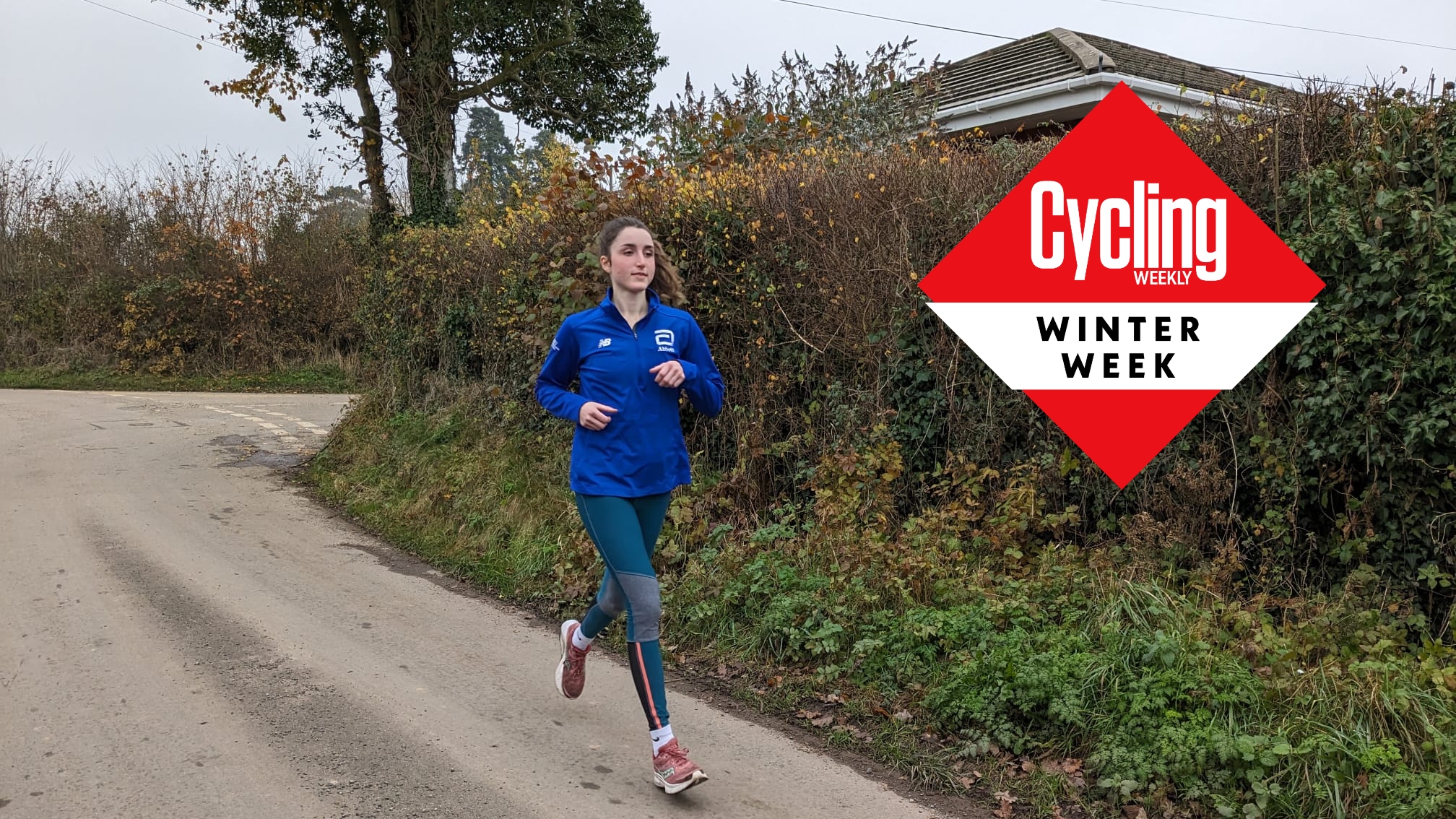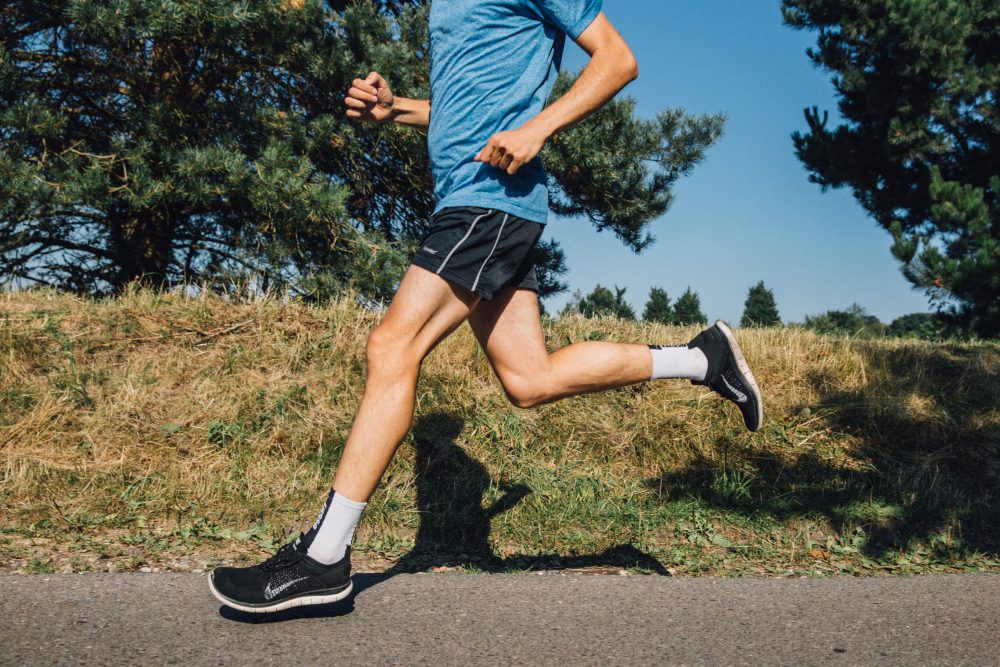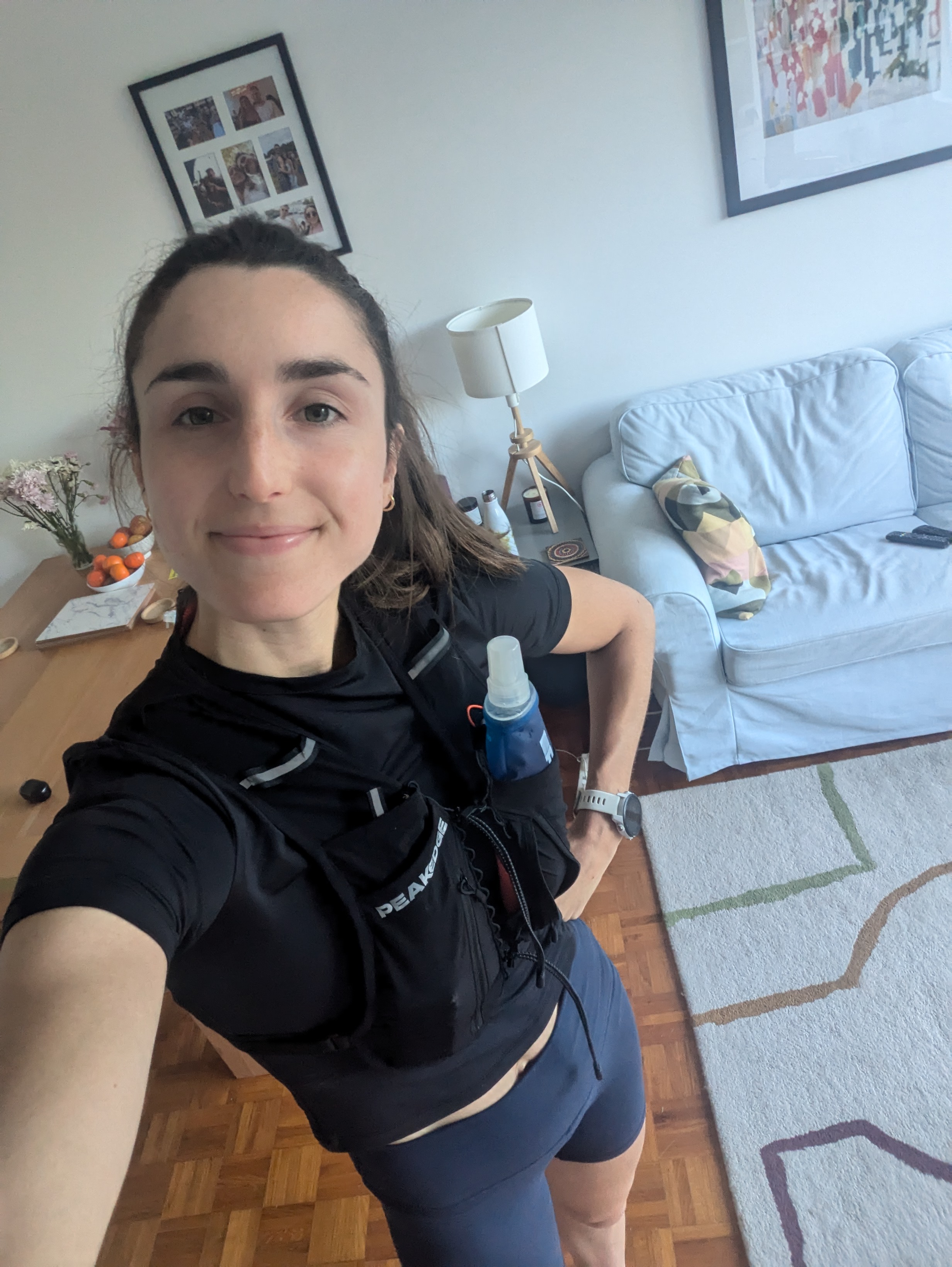How much running is ‘too much’ running for cyclists - I trained for a marathon to find out
Many cyclists like to swap their cleats for running shoes - at least for some sessions — during winter, but where should we draw the line?

There are plenty of professional and amateur cyclists who incorporate running into their training to some degree. Cycling superstar Primož Roglič reportedly bashes out a daily 20-30 minute morning jog, even during peak season, while professional athletes Adam Yates, Emma Pooley and Tom Pidcock have logged speedy running times in everything from the 5k to a full-blown marathon in recent years.
A sharp uptake in running is also common during the winter months. Being whipped around the face with icy headwinds doesn’t have quite the same appeal as riding during the summer, and it can be a handy way to keep fitness ticking over when the weather turns sour. But many cyclists fear the impact that miles covered on two legs, instead of two wheels, could have on their cycling performance. Is there such a thing as ‘too much’ running for cyclists? If so, how much is too much?
To really put the ‘hybrid’ running and cycling training plan to the test, I trained for a marathon. I wanted to find out if the added running load would hinder my cycling, and whether it was even possible to continue riding regularly while putting in the time and mileage required to run 26.2 miles. After spending hours on the bike this year, including training and completing my first 100-mile ride, I was keen to prove that it’s possible to train for a major running goal without compromising my hard-earned cycling fitness.
Signing up to the plan

I subscribed to a 12-week marathon training block which included three runs a week: one ‘easy’, one fast (tempo or intervals), and one long run. I’d clock anywhere between 20 kms and 50 kms a week, while also fitting in two strength sessions to support my training and reduce my risk of injury. That’s five training days a week, with two rest days, so where does cycling fit into all of that?
“It definitely can and it definitely does”, argues Tim Pigott, Founder & Head Coach at HP3. “Plenty of marathon programmes advocate for cross training for recovery and as a way of maintaining aerobic load without the impact of running every day.” He argues that cycling’s place in a marathon programme is a way of offsetting the effects that lots of high-impact training can have on your body. Especially for those who come from a cycling predominant background, jumping straight into a running-heavy training block is likely to cause havoc on your joints.
The key thing to remember here is that cycling should be used mostly for recovery purposes, and perhaps some easy aerobic training, when following a high-volume running plan. Too much cycling and you risk going into your runs fatigued and depleted. “Keep it easy and listen to the feedback your body is giving,” explains Pigott. “Ultimately you need to be recovered and in a good place to benefit from your next run session.” Clearly, this approach isn’t going to see a rider make gains in their power output, as consistent over-reaching is required to achieve progression on the bike.
Ok, so low-intensity cycling can have a place in a marathon training plan, but what role does running play in a cyclist’s fitness routine? Pigott argues that the sports complement one another really well. “Both sports benefit from a good strong cardiovascular system and good muscular endurance. In general, running and the extra load on joints and tendons should help you become stronger and more resilient as a cyclist in the long term.”
The latest race content, interviews, features, reviews and expert buying guides, direct to your inbox!
So the more miles I run, the stronger I’ll become as a cyclist? Well, not quite. There are many differences in the muscles used for each sport, which means that when it comes to training for a specific cycling or running event, it’s better to focus on your target discipline to ensure you’re primed and ready for the big day. And while running can certainly have a place in any cyclist’s training regime, serious athletes will have to put a cap on how much they do. “If you are a competitive cyclist then there will be a point where the time is better spent on the bike,” admits Pigott. ‘“But all cyclists should try and include some running in the off season. This is more about adding some impact for bone health, than any performance gains, he says, referencing the benefits of weight-bearing exercise on an area that often represents a weakness for cyclists.
As we head into winter, the consensus seems to be that some running, but not too much, will aid cycling performance by maintaining a good level of fitness and strengthening the muscles in your legs. But I was doing a little more than ‘some’ running, and while I certainly felt fit and my legs strong, the main problem was that I couldn’t find the time or energy to add cycling to the list as well. How is an amateur cyclist and runner supposed to fit it all in?
The juggling act of training for two sports

Cycling is often used my multisport athletes as a recovery aid
As someone who’s completed multiple Ironmans, Ben Parker, an Ironman Coach and the co-founder of running app Runna, is well-versed in the time-related struggle of training for ultra-distance events. Like the rest of us, he has a full time job that makes fitting in training a little more difficult.
“I try to get the proportion of my cycling as easy miles which I’ll build into my lifestyle, like commuting to work,” he suggests. “Then I do one 'key' speed session without fail, where I ride a very hard tempo ride with my club.”
For anyone who’s trained consistently for a few years, he also advises doing double sessions (both running and cycling) on one day, to build up your mileage while allowing for full rest days elsewhere to help with better recovery. But be mindful: “I find it best to keep the long runs and long cycles on separate days given the amount of energy they both take.”
Indeed, the other issue holding me back from my bike was recovery. My long run days were pretty draining, and I felt like I needed one or two rest days to get back to baseline before my next run. Squeezing in a cycle would have left me feeling even more depleted, which goes back to what Pigott says about listening to your body.
Did it work, for me?

Ellie on the morning of her marathon run
The honest answer is that, for me, training for a marathon required too much running to allow me to maintain consistency on the bike. I completed a marathon (solo, outside of an event) on the 14th September, in a time I was truly proud of (3hours 31minutes), but my cycling took a decent hit.
Apart from the odd commute, I had to part ways with my bike for 12 weeks in order to focus on running 26.2 miles, but that’s not to say a more seasoned athlete couldn’t combine both.
My ‘normal’ approach to training follows a ‘hybrid athlete’ model anyway, which involves cycling, running and weight-training, but with a slightly more balanced split across each sport. I regularly run distances of between 8k and 15k, while fitting in longer rides, regular commutes on the bike, and perhaps the odd high-intensity bike session. This works for me, and is a routine I can maintain, allowing me to practice them all consistently. What works for you will be determined by your time available, training history, and goals.
The frustrating answer to my original question — how much running is too much running for a cyclist — is that it depends on the person, but it is heartening to hear from the experts that running can absolutely have a place in any cyclist's training routine. In fact, great cyclists are likely to be great runners, which is one of the reasons so many riders are keen to explore their potential in the sport.
I’d encourage any cyclist to do the same. Running a marathon might not get you to peak physical performance for a major cycling event, but it will help with your training in other ways, from better mental resilience to pushing your body to new limits. I’m glad I took on the challenge, and while my cycling progress might have stalled, it’s left me with renewed excitement to get back in the saddle. And that’s a priceless feeling that, I’m hoping, will propel me even further in my progress as a cyclist.
Ellie Donnell is a contributing writer for Cycling Weekly and has written for a broad range of titles including Delicious Magazine, Co-op, The Independent and SquareMeal (where she currently holds the role of Managing Editor). While her specialism is in food and drink, Ellie is hugely passionate about fitness and practices a 'hybrid' approach to training covering running, weightlifting and cycling. Her love for cycling has flourished in recent years, causing her to purchase her first carbon road bike, participate in a duathlon and tackle a three-day cycling tour from Reading to Devon – although you’ll often find her doing laps of Richmond Park at the weekend.